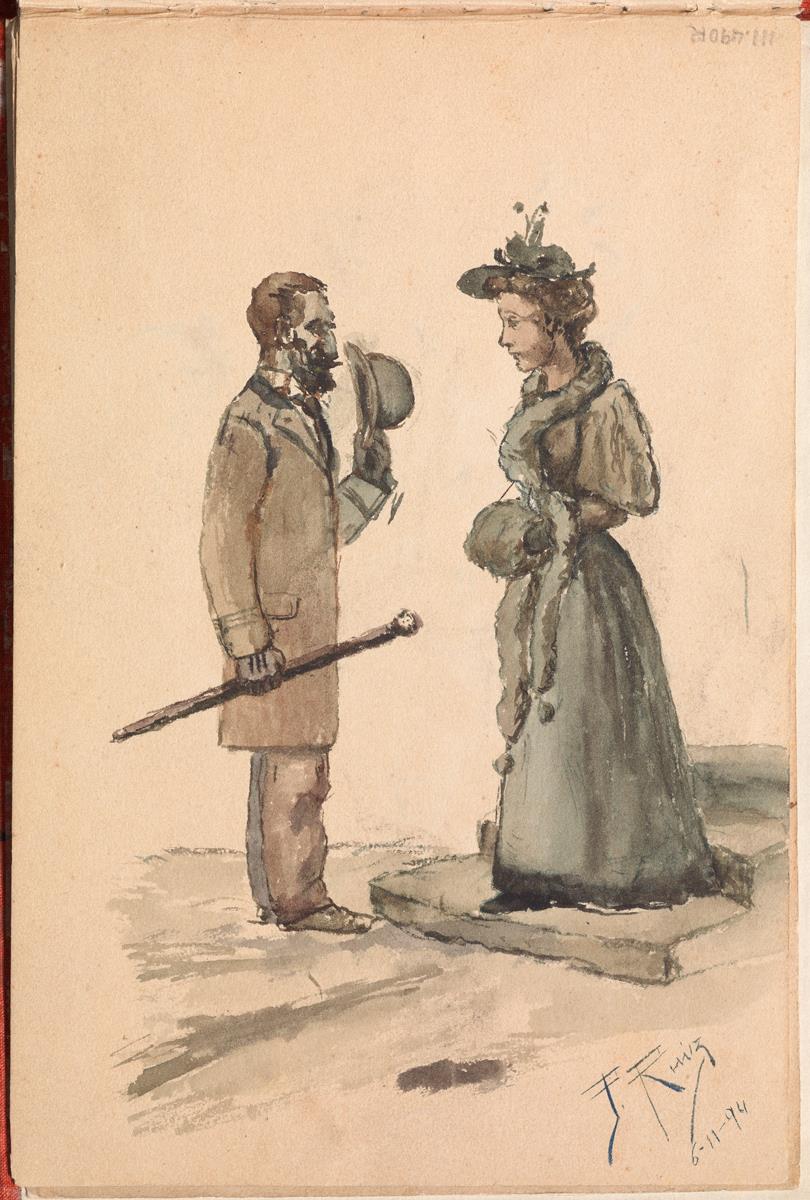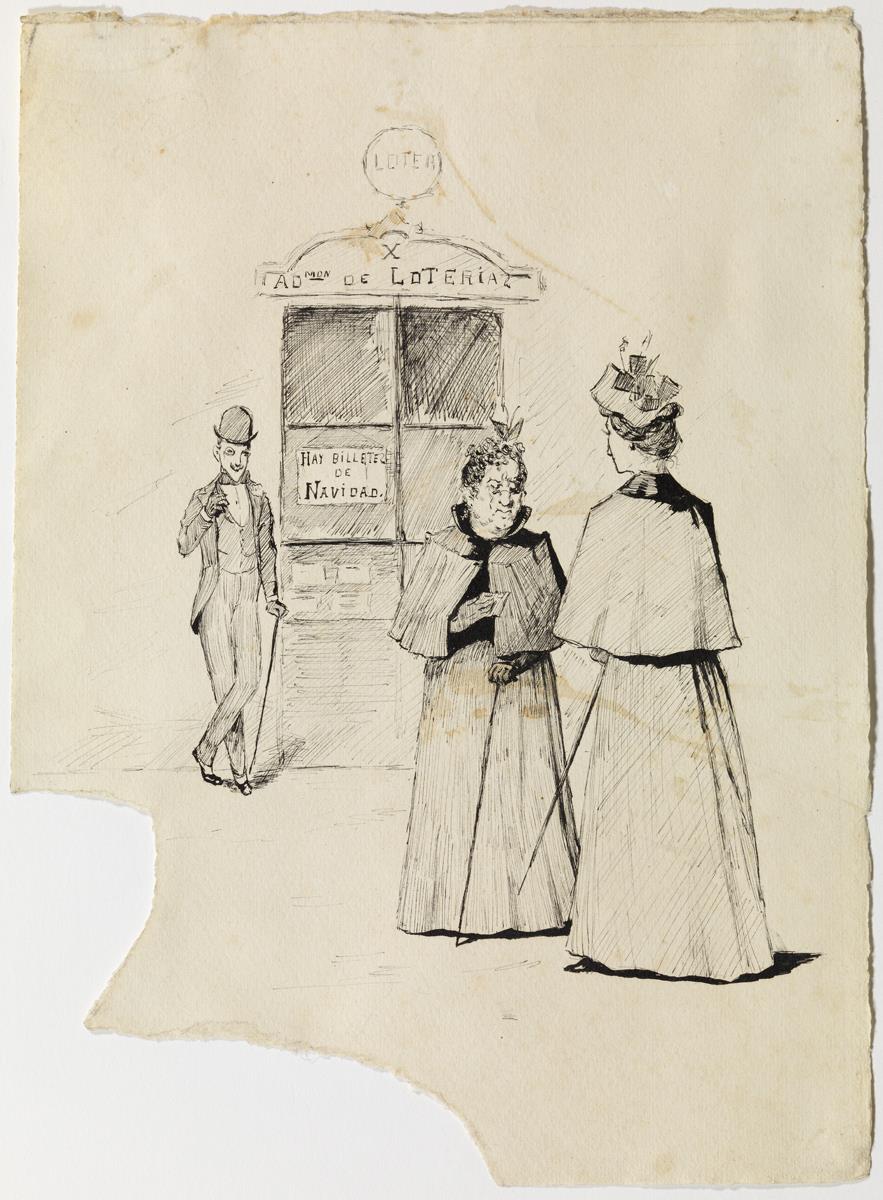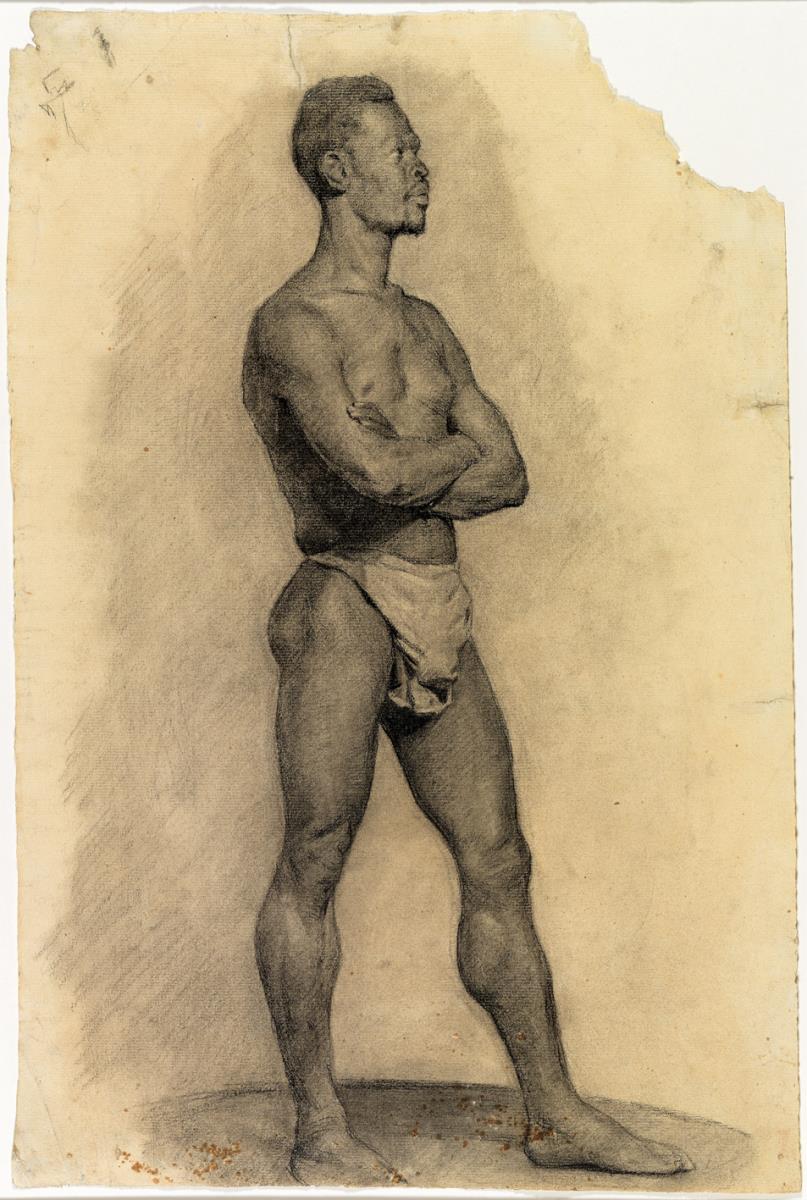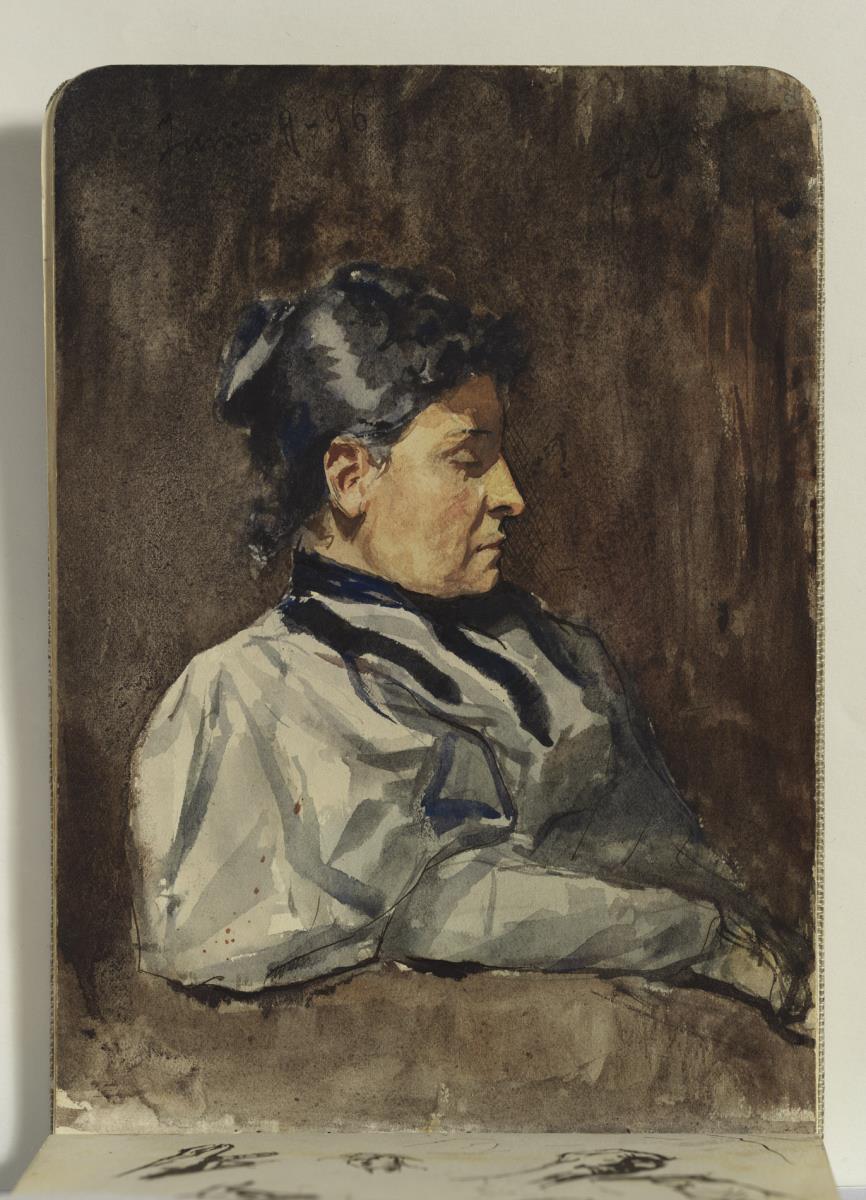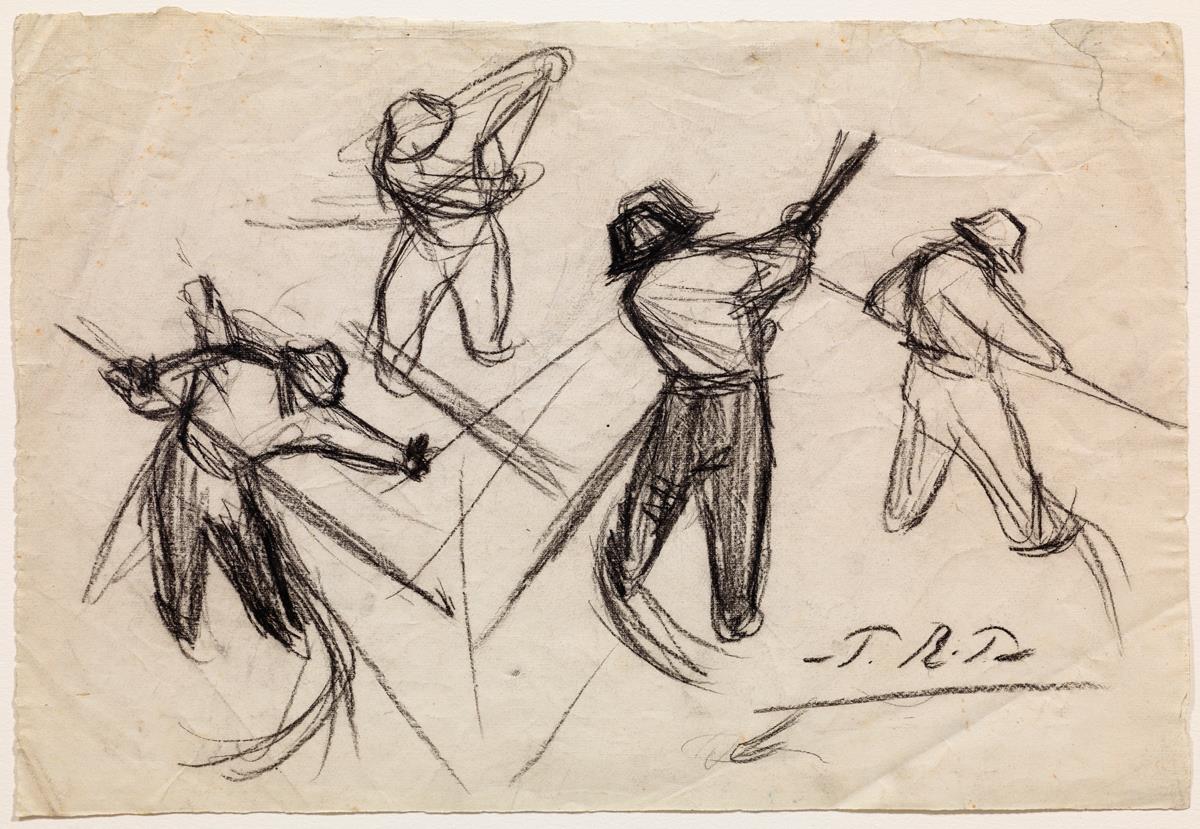The drawings in this selection — donated by Pablo Picasso to the museum in 1970 —show that drawing was his main means of artistic expression from a very early age. He used pencil, charcoal or ink to capture the world around him, first as an eager apprentice, and then as a means of experimentation.


Pablo Picasso. Gentleman greeting a lady . Sketchbook of la Corunya, 1894-1895. La Corunya, February 6 1894. Watercolour paper. 19 x 12,6 cm. Gift of Pablo Picasso, 1970. Museu Picasso, Barcelona. Photo: Estudi Gasull. MPB 111.490R | Pablo Picasso. Lottery ticket. La Corunya, c. 1895. Pen and Indian ink on watermarked paper. 27,4 x 19,9 cm. Gift of Pablo Picasso, 1970. Museu Picasso, Barcelona. Photo: Estudi Gasull. MPB 110.377
The drawings from A Coruña on display in this gallery already show a keen eye for his urban surroundings, as well as flashes of humour. Next there are drawings from his formative years.
His academic exercises made at Escuela de Bellas Artes of La Coruña (1892-95) and at Escola de Belles Arts de la Llotja of Barcelona (1895-97) are the firs to be exposed, followed by a series of sketches, both family portraits and female figures, which show his great observational skills.



Pablo Picasso. Academic exercise. Charcoal and traces of chalk on paper. 62,5 x 47,3 cm. Gift of Pablo Picasso, 1970. Museu Picasso, Barcelona. Photo: Estudi Gasull. MPB 110.873 | Pablo Picasso. Anatomical study. Barcelona, 1895-1897. Graphite pencil, and sepia ink on watermarked paper. 62,5 x 50,2 cm. Gift of Pablo Picasso, 1970. Museu Picasso, Barcelona. Photo: Estudi Gasull. MPB 110.551 | Pablo Picasso. Academic study. Barcelona, 1895-1897. Charcoal and Conté crayon on laid watermarked paper. 47,3 x 31,8 cm. Gift of Pablo Picasso, 1970. Museu Picasso, Barcelona. Photo: Estudi Gasull. MPB 110.853
As Susan Galassi says “The primacy of drawing – a fundamental tenet of classicism – [is] the vital link that connects all aspects of Picasso’s work. […] His Academia culminates a process […]. His confident handling of the conventions of naturalistic drawing, and empathy with his subject, result in a convincing three dimensional image of a living, breathing individual whose form stands out from the flat surface of the sheet.”



Pablo Picasso. The artist's father. Barcelona, c. 1899. Conté crayon on paper. 40,9 x 32 cm. Gift of Pablo Picasso, 1970. Museu Picasso, Barcelona. Photo: Estudi Gasull. MPB 110.590 | Pablo Picasso. The artist's father. Barcelona, c. 1896. Blue watercolour on paper. 18 x 11,8 cm. Gift of Pablo Picasso, 1970. Museu Picasso, Barcelona. Photo: Estudi Gasull. MPB 110.281 | Pablo Picasso. The artist's mother. Sketchbook of Barcelona, 1896. Barcelona, June 9 1896. Watercolour, pen and ink, graphite pencil and Conté crayon on paper. 18 x 12,7 cm. Gift of Pablo Picasso, 1970. Museu Picasso, Barcelona. Photo: Estudi Gasull. MPB 111.472
From his youth, Picasso drew constantly and filled throughout his life about 175 sketchbooks, 18 of which are preserved in the museum's collection.
The historian Werner Spies considers that “Picasso saw [his sketchbooks as] his inventory of forms, which were to have a decisive influence on how his work evolved.”
The selection concludes with a set of confident drawings in which Picasso explores new forms of expression more in keeping with the spirit of modernity in late-19th-century Barcelona.


Pablo Picasso. Bearer. Barcelona, 1898. Conté crayon on watermarked paper. 32 x 24,6 cm. Gift of Pablo Picasso, 1970. Museu Picasso, Barcelona. Photo: Estudi Gasull. MPB 110.792 | Pablo Picasso. Street sweepers. Barcelona, c. 1899. Conté crayon on watermarked paper. 23,3 x 33,6 cm. Gift of Pablo Picasso, 1970. Museu Picasso, Barcelona. Photo: Estudi Gasull. MPB 110.782
In this way, as Richard Kendall says “After submitting to a traditional education … [Picasso] chose not to step outside this system but to challenge many of the principles on which it was founded. Now, armed with a sophisticated mastery of drawing and the intricacies of the human body… [he] addressed the world that surrounded [him] in forms that were appropriate to [his] time.”
The selection of drawings can be seen in the A galleries of the museum's permanent collection collection until 24 May.
Museum’s newsroom


